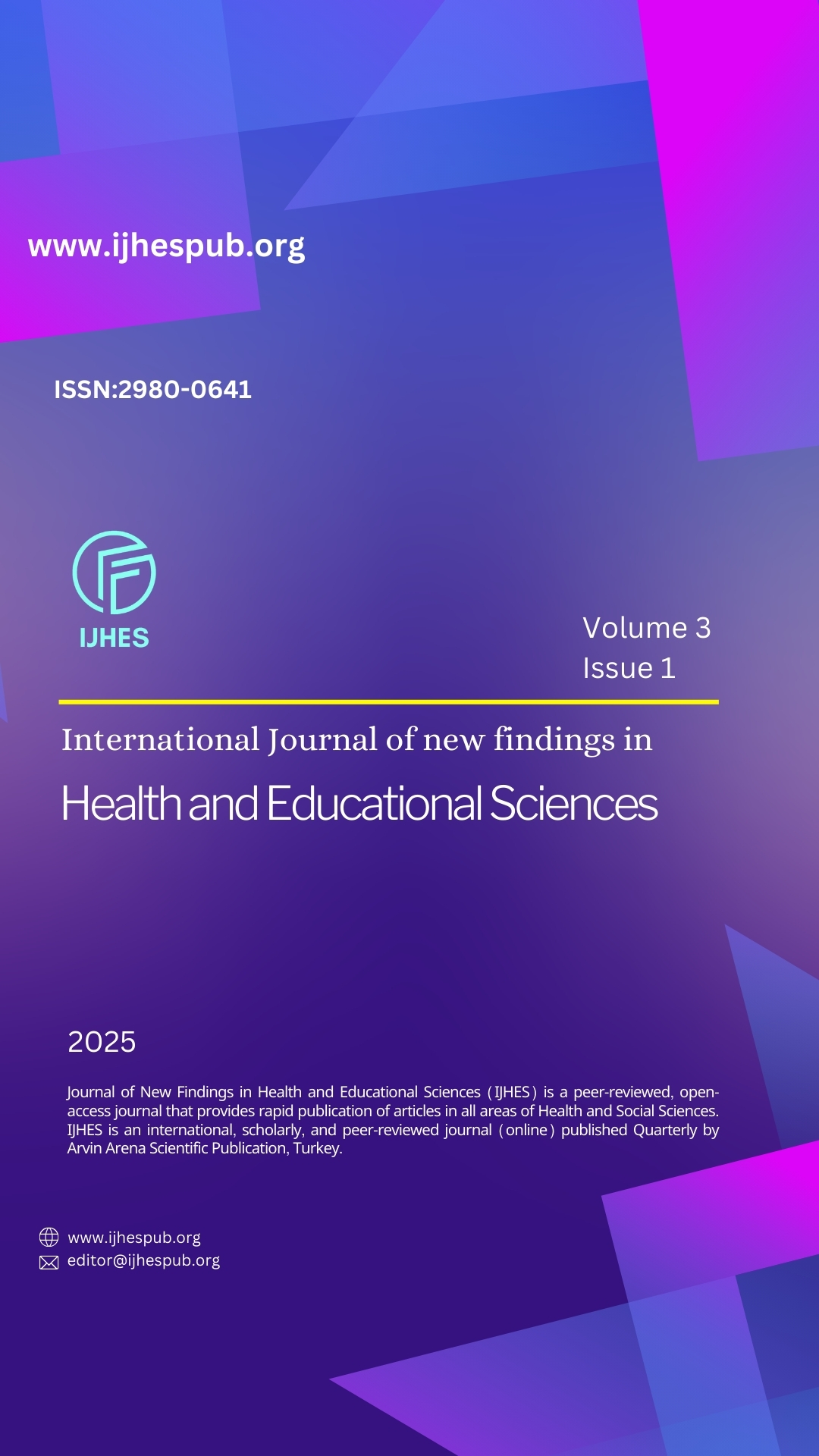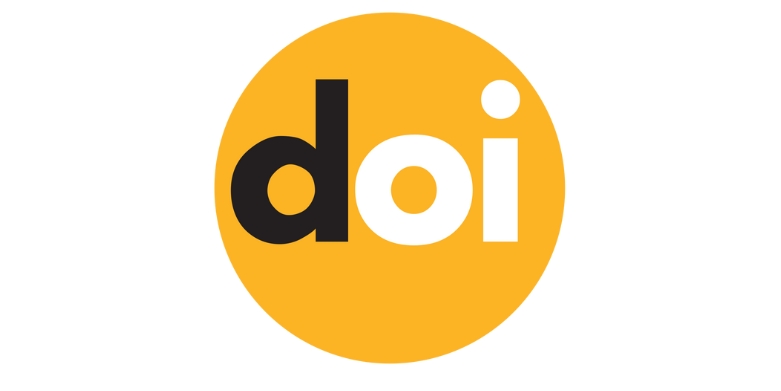Multiple and simultaneous relationships between quality of work life, job engagement, and emotional intelligence with mental health variables (depression, anxiety, and stress)
DOI:
https://doi.org/10.63053/ijhes.116Keywords:
Mental Health, Quality of Work Life, Job Engagement, Emotional IntelligenceAbstract
The existence of psychological problems in employees brings many harms and losses to organizations. Meanwhile, healthy employees show better job performance and lead to increased organizational productivity. Therefore, this study aimed to investigate the multiple and simultaneous relationship between quality of work life, job engagement and emotional intelligence with mental health variables (depression, anxiety and stress). The research method was a descriptive correlation type that used focal correlation analysis. The statistical population was 12,500 employees of the steel industries of Isfahan in 1401 and 348 people were selected as samples using the available sampling method. The data collection tools were the Stress-Anxiety-Depression Questionnaire (DASS-21), the Work Quality of Life Questionnaire (WRQoL-2), the Hi-Group Job Engagement Questionnaire and the Goleman Emotional Intelligence Questionnaire. Focal correlation in SPSS-23 software was used to analyze the data. The results showed that based on the significance of the lambda coefficient (p<0.001, F=12.19, λ=0.74), there is a significant relationship between the set of variables of quality of work life, job engagement and emotional intelligence with the set of mental health variables (anxiety, depression and stress). Also, each variable of quality of work life, job engagement and emotional intelligence explained 0.104, 0.12, and 0.19 of the mental health variables, respectively. Based on the results, it is concluded that organizations should focus on emotional intelligence training programs and necessary measures to improve the level of quality of work life and job engagement of employees to improve the mental health of employees.
References
- Iranzadeh, S., Khadivi, E. and Mashatzadegan, M. (2013). The relationship between emotional intelligence of managers and their performance in Bahman Industrial Group. Productivity Management, 7(27), 125-144.
- Pourali Gholi Ipchi, L. and Farhadi, H. (2019). The relationship between work addiction and work enthusiasm with the quality of work life: the moderating role of personality traits. Industrial and Organizational Psychology Studies, 7(2), 301-320.
- Davari, A. and Moazami Goodarzi, R. (2015). Measuring job satisfaction of steel industry employees based on the Hay Group model. The Third International Conference on Management Challenges and Solutions, Shiraz, https://civilica.com/doc/507640.
- Saeedi, Somayeh, Vakili, Yaghoub, Emadi, Farinaz, Goudarzvand Chegini, Masoumeh and Nooripour Liavoli, Roghieh. (2013). Investigating the role of mindfulness and job engagement in predicting the quality of work life of nurses. Journal of Career and Organizational Counseling, 14(2), 95-112.
- Mazloumi Adel, Kazemi Zeinab, Mehrdad Ramin, Helmi Kohneshahri Mehrdad, Pourhossein Mehran. (2017). Validity and reliability of the WRQoL-2 questionnaire for assessing the quality of work life of nurses. Occupational Health and Safety, 7(2), 152-143.
- Mahdad, Ali. (2019). Industrial and Organizational Psychology (new edition). Tehran: Jangal Publications, Javedaneh.
- Bakhshi, E., Moradi, A., Naderi, M., & Kalantari, R. (2018). Associations of the quality of work life and depression, anxiety, and stress in the employees of healthcare systems. Journal of Patient Safety & Quality Improvement, 6(1), 662-667. [In Persian]
- Bakker, A. B., & Demerouti, E. (2007). The job demands‐resources model: State of the art. Journal of managerial psychology, 22(3), 309-328. DOI: https://doi.org/10.1108/02683940710733115
- Bakker, A. B., & Demerouti, E. (2008). Towards a model of work engagement. Career Development International, 13(3), 209-223. DOI: https://doi.org/10.1108/13620430810870476
Batool, S. S., & Khalid, R. (2009). Low emotional intelligence: A risk factor for depression. Journal of Pakistan Psychiatric Society, 6(2), 65-72.
- Carmichael, A., Lander, F., & Steele, R. (2021). Out of the shadows: Sustainably improving workplace mental health. McKinsey Report. Pobrane z: https://www. Mckinsey. Com/featured-insights/Asia-pacific/out-of-the-shadows-sustainably-improving-workplace-mental-health.
- Cetrano, G., Tedeschi, F., Rabbi, L., Gosetti, G., Lora, A., Lamonaca, D., ... & Amaddeo, F. (2017). How are compassion fatigue, burnout, and compassion satisfaction affected by the quality of working life? Findings from a survey of mental health staff in Italy. BMC health services research, 17, 1-11. DOI: https://doi.org/10.1186/s12913-017-2726-x
- Doyle, N. A., Davis, R. E., Quadri, S. S. A., Mann, J. R., Sharma, M., Wardrop, R. M., & Nahar, V. K. (2021). Associations between stress, anxiety, depression, and emotional intelligence among osteopathic medical students. Journal of Osteopathic Medicine, 121(2), 125-133. DOI: https://doi.org/10.1515/jom-2020-0171
- Easton, S., & Van Laar, D. (2018). User manual for the Work-Related Quality of Life (WRQoL) Scale: a measure of the quality of working life. University of Portsmouth.
- Farhadi, H., Nasir, R., Omar, F., & Nouri, A. (2015). UNDERSTANDING EMPLOYEES'DEVIANT BEHAVIOUR: THE ROLE OF AGREEABLENESS AND STRESS RELATED TO WORK. e-BANGI Journal, 10.
- Giri, M. S., Udapi, M. G., Giri, R. K., & Giri, K. (2023). Emotional Intelligence about their Mental Health among selected undergraduate Health Science students. International Journal of Indian Psychȯlogy, 11(1).
- Goda, A., Elhussiney, D., & Ghanem, E. (2023). Associations Between Quality of Work Life and Depression, Anxiety, and Perceived Fatigue among Teaching Staff of Faculty of Medicine. The Egyptian Journal of Community Medicine, 41(2), 93-100.
- Goleman, D. (2000). Emotional intelligence (terjemahan). Jakata: PT Gramedia Pustaka Utama.
- Gómez‐Salgado, J., Domínguez‐Salas, S., Romero‐Martín, M., Romero, A., Coronado‐Vázquez, V., & Ruiz‐Frutos, C. (2021). Work engagement and psychological distress of health professionals during the COVID‐19 pandemic. Journal of Nursing Management, 29(5), 1016-1025. DOI: https://doi.org/10.1111/jonm.13239
- González-Baltazar, R., León-Cortés, S. G., Contreras-Estrada, M. I., Hidalgo-Santacruz, G., & Hidalgo-González, B. J. (2018). 626 Relationship of quality of work life with depression/anxiety in the administrative staff of an institution of higher education in Mexico. DOI: https://doi.org/10.1136/oemed-2018-ICOHabstracts.1737
- Hay Group. (2015). From engagement to enablement. Retrieved from https://cvaa.org.uk/wp-content/uploads/members-resources/From-Engagement-to-Enablement-Hay-Group_(digital__agency_management).pdf
- Inarda, A. (2022). A Mixed-Methods Study on the Influence of Quality of Work Life on Commitment and Performance. Probl. Perspect. Manag, 20, 321-334. DOI: https://doi.org/10.21511/ppm.20(2).2022.27
- Innstrand, S. T., Langballe, E. M., & Falkum, E. (2012). A longitudinal study of the relationship between work engagement and symptoms of anxiety and depression. Stress and health, 28(1), 1-10. DOI: https://doi.org/10.1002/smi.1395
- Karatepe, O. M., Saydam, M. B., & Okumus, F. (2021). COVID-19, mental health problems, and their detrimental effects on hotel employees’ propensity to be late for work, absenteeism, and life satisfaction. Current Issues in Tourism, 24(7), 934-951. DOI: https://doi.org/10.1080/13683500.2021.1884665
- Knofczynski, G. T., & Mundfrom, D. (2008). Sample sizes when using multiple linear regression for prediction. Educational and psychological measurement, 68(3), 431-442. DOI: https://doi.org/10.1177/0013164407310131
- Kuhn, K. (2013). Workplace related mental health problems–risks and prevention. Die Psychiatrie, 10(02), 61-70. DOI: https://doi.org/10.1055/s-0038-1670857
- Lea, R. G., Davis, S. K., Mahoney, B., & Qualter, P. (2019). Does emotional intelligence buffer the effects of acute stress? A systematic review. Frontiers in Psychology, 10, 437562. DOI: https://doi.org/10.3389/fpsyg.2019.00810
- Leijten, F. R., van den Heuvel, S. G., van der Beek, A. J., Ybema, J. F., Robroek, S. J., & Burdorf, A. (2015). Associations of work-related factors and work engagement with mental and physical health: a 1-year follow-up study among older workers. Journal of Occupational Rehabilitation, 25, 86-95. DOI: https://doi.org/10.1007/s10926-014-9525-6
- Lovibond, S. H., & Lovibond, P. F. (1995). Depression anxiety stress scales. Psychological Assessment. DOI: https://doi.org/10.1037/t01004-000
- Mayer, J. D., Salovey, P., & Caruso, D. (2000). Models of emotional intelligence. Handbook of intelligence, 2, 396-420. DOI: https://doi.org/10.1017/CBO9780511807947.019
- Mirkamali, S. M., & Thani, F. N. (2011). A study on the quality of work life (QWL) among faculty members of the University of Tehran (UT) and Sharif University of Technology (SUT). Procedia-Social and Behavioral Sciences, 29, 179-187. DOI: https://doi.org/10.1016/j.sbspro.2011.11.223
- Moroń, M., & Biolik-Moroń, M. (2021). Trait emotional intelligence and emotional experiences during the COVID-19 pandemic outbreak in Poland: A daily diary study. Personality and individual differences, 168, 110348. DOI: https://doi.org/10.1016/j.paid.2020.110348
- Persich, M. R., Smith, R., Cloonan, S. A., Woods‐Lubbert, R., Strong, M., & Killgore, W. D. (2021). Emotional intelligence training as a protective factor for mental health during the COVID‐19 pandemic. Depression and Anxiety, 38(10), 1018-1025. DOI: https://doi.org/10.1002/da.23202
- Saidykhan, L. W., & Ceesay, L. (2020). Quality of work-life among employees of the university of the Gambia. Archives of Business Research, 8(3), 230-248. DOI: https://doi.org/10.14738/abr.83.7920
- Schaufeli, W. B. (2017). Applying the Job Demands-Resources model: A ‘how to ’ guide to measuring and tackling work engagement and burnout. Organizational dynamics, 46(2), 120-132. DOI: https://doi.org/10.1016/j.orgdyn.2017.04.008
- Schaufeli, W. B., & Bakker, A. B. (2004). Job demands, job resources, and their relationship with burnout and engagement: A multi‐sample study. Journal of Organizational Behavior: The International Journal of Industrial, Occupational and Organizational Psychology and Behavior, 25(3), 293-315. DOI: https://doi.org/10.1002/job.248
- Sergi, M. R., Picconi, L., Tommasi, M., Saggino, A., Ebisch, S. J., & Spoto, A. (2021). The role of gender in the association among emotional intelligence, anxiety and depression. Frontiers in Psychology, 12, 747702. DOI: https://doi.org/10.3389/fpsyg.2021.747702
- Singh, A. P. (2017). Role of Positive Psychological Capital in Predicting Employees “Engagement in Private Sector Organization. Asian Journal of Research in Social Sciences and Humanities, 7(4), 26-38. DOI: https://doi.org/10.5958/2249-7315.2017.00262.3
- Sudibjo, N., & Sutarji, T. (2020). The roles of job satisfaction, well-being, and emotional intelligence in enhancing the teachers' employee engagement. Management Science Letters, 10(11), 2477-2482. DOI: https://doi.org/10.5267/j.msl.2020.4.002
- Tolsa, M. D., & Malas, O. (2022). Re-exploring the connection between Emotional Intelligence, Anxiety, Depression, and Stress in the adult population. Mediterranean Journal of Clinical Psychology, 10(1).
- Torp, S., & Bergheim, L. T. J. (2023). Working environment, work engagement and mental health problems among occupational and physical therapists. Scandinavian Journal of Occupational Therapy, 30(4), 505-519. DOI: https://doi.org/10.1080/11038128.2022.2154261
- Torp, S., Grimsmo, A., Hagen, S., Duran, A., & Gudbergsson, S. B. (2013). Work engagement: a practical measure for workplace health promotion? Health Promotion International, 28(3), 387-396. DOI: https://doi.org/10.1093/heapro/das022
- Uzonwanne, F. C., & Ijide, W. O. V. (2017). Dimensions of work-life balance as predictors of anxiety among a sample of Nigerian bankers. IFE PsychologIA: An International Journal, 25(1), 148-168.
- Wells, J., Watson, K., E. Davis, R., Siraj A. Quadri, S., R. Mann, J., Verma, A., ... & Nahar, V. K. (2021). Associations among stress, anxiety, depression, and emotional intelligence among veterinary medicine students. International journal of environmental research and public health, 18(8), 3934. DOI: https://doi.org/10.3390/ijerph18083934
- World Health Organization. (2004). Promoting mental health: Concepts, emerging evidence, practice: Summary report. World Health Organization.
- Zhang, Y., Punnett, L., Mawn, B., & Gore, R. (2016). Working conditions and mental health of nursing staff in nursing homes. Issues in mental health nursing, 37(7), 485-492. DOI: https://doi.org/10.3109/01612840.2016.1162884
- Zia, S., Nawaz, D., Iqbal, S., Arbab, M., & Asghar, I. (2021). Mediating Role of Social Support on the Relationship between Emotional Intelligence and Mental Health among the University Students. Psychology and Education, 58(2), 10560-10566.
Downloads
Published
How to Cite
Issue
Section
License
Copyright (c) 2025 Authors

This work is licensed under a Creative Commons Attribution 4.0 International License.
The journal is licensed under a Attribution 4.0 International (CC BY 4.0).
You are free to:
- Share — copy and redistribute the material in any medium or format for any purpose, even commercially.
- Adapt — remix, transform, and build upon the material for any purpose, even commercially.
- The licensor cannot revoke these freedoms as long as you follow the license terms.
Under the following terms:
- Attribution - You must give appropriate credit , provide a link to the license, and indicate if changes were made . You may do so in any reasonable manner, but not in any way that suggests the licensor endorses you or your use.
- No additional restrictions - You may not apply legal terms or technological measures that legally restrict others from doing anything the license permits.












